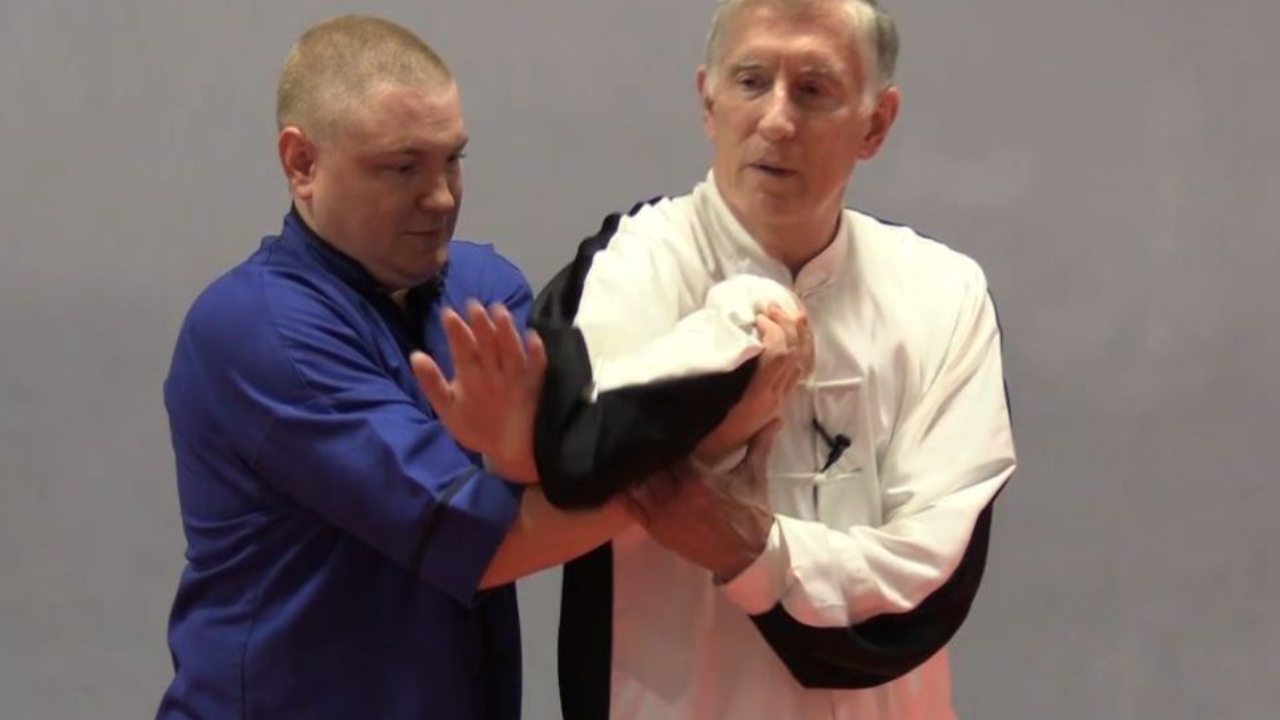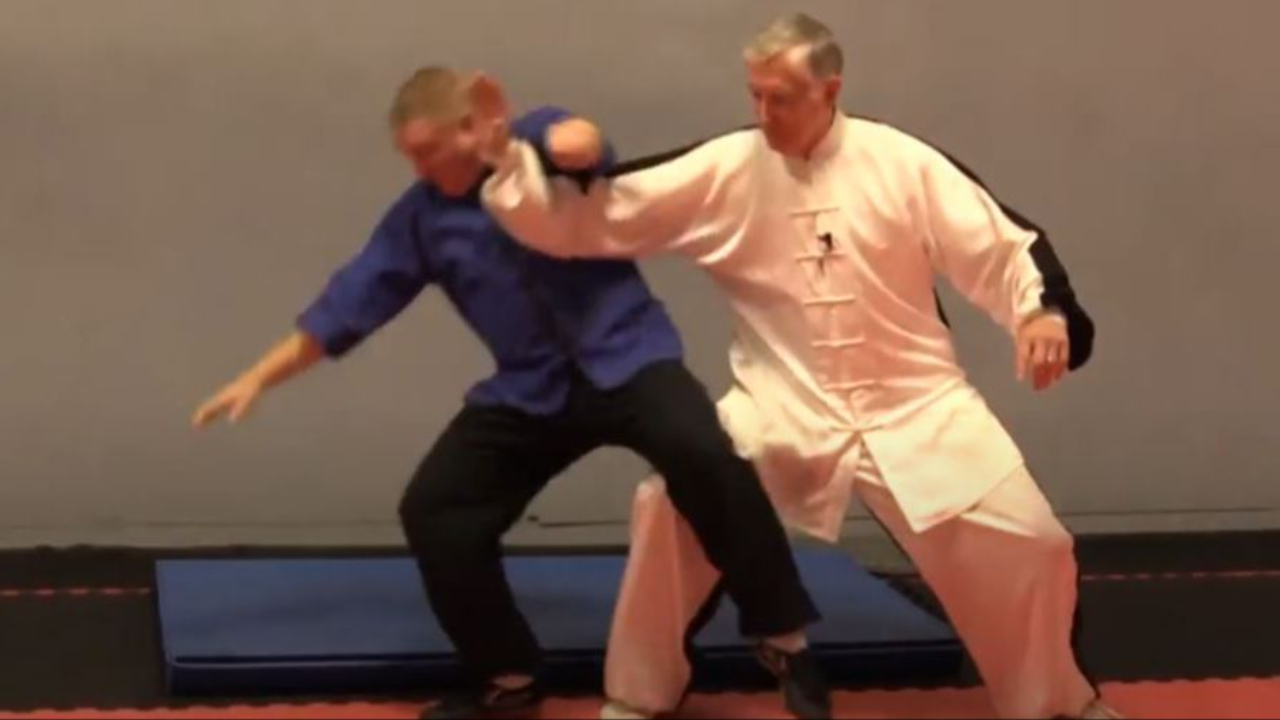Watch a Silk-Reeling Class for Beginners Recorded Live with Ken Gullette
This class was recorded on Saturday, October 15, 2022. I invited the members of this website plus people who are on my email list who receive my Internal Tip-of-the-Week emails.
In this video, I go over the first silk-reeling exercise that I teach students. I learned this exercise from Chen Xiaowang and my first Chen taiji teacher, Jim Criscimagna. The instruction also reflects insights I've picked up from others along the way, including Chen Xiaoxing, Mark Wasson, Chen Huixian and Nabil Ranne.
This is a good example of my live Zoom classes, which I hold for members of this website. I do two live Taiji classes on Wednesdays, and I do live Zoom classes on Xingyi and Bagua at varying times. Members of the website get all the content on the site (close to 1,000 videos and pdf downloads) plus live classes and live one-on-one sessions, at no extra cost.
This video runs 32 minutes but it contains information you won't find on most silk-reeling videos.
Silk-Reeling Exercises Can Help You Develop Internal Body Mechanics

Silk-Reeling exercises are forgotten by some Chen style Taiji students after they practice forms, but I believe these exercises should be included in everyone's training routine.
I first learned Silk-Reeling exercises from Chen Xiaowang and my first Chen Taiji teachers, Jim and Angie Criscimagna. Silk-reeling is known in China as chan ssu chin. As I understand it, the exercises were created in recent decades. They are not part of the traditional training in the Chen Village. I went through a silk-reeling workshop with Chen Xiaowang back in 2000 but was already working on them at that time.
When I began teaching, I tried to organize material in easy-to-understand pieces for my students (and for me). For the past 23 years, I have taught six key principles of body mechanics to beginning students:
1. The ground path
2. Establishing and maintaining peng jin
3. Opening and closing the kua
4. Dan T'ien rotation
5. Whole-body connected movement
6. Silk-Reeling energy
New student...
Silk-Reeling Exercises - Fighting Applications of Chan Ssu Jin

I am finishing up production on a new DVD -- actually, a replacement of my original Silk-Reeling Energy DVD, a 2-disc set I did back in 2008.
The new revised version is all on one disc and it should be ready for market next week.
It includes in-depth instruction on 19 silk-reeling exercises that help you put the key body mechanics of the internal arts into action.
I'll announce next week when the DVD is available on my websites and on Amazon.
In the meantime, here is a quick highlight of some fighting applications for silk-reeling exercise number one. We shot applications for each of the SRE exercises for the website. Every movement in Tai Chi has a fighting application, even silk-reeling exercises, which are really just Tai Chi movements.
Internal Body Mechanics Come Together in Silk-Reeling Exercises

The body mechanics of real Tai Chi are very different than other "hard" martial arts that I had studied. I had been a student of Shaolin, Taekwondo, Wushu (Tien Shan Pai), and I had practiced karate on my own. I had also studied Xingyi, Bagua, and, as I mentioned above, Yang Tai Chi.
Nothing prepared me for the nuances and subtlety of Chen family Taijiquan. Over time, as I learned from Jim and Angela, the late Mark Wasson, and masters such as Chen Xiaowang, Chen Xiaoxing,
Ren Guangyi and others, I began to isolate six crucial body mechanics that yo...
Tai Chi's Single Whip - Silk-Reeling and Connected Internal Strength

Single Whip is a common movement in all styles of Tai Chi (Taijiquan) and, like all Taiji movements, it depends on some key internal body mechanics that give you relaxed strength. The body mechanics include:
-- Establishing and maintaining the ground path through all movement, including stepping.
-- Establishing and maintaining peng jin, an expansive force that is a physical skill (not mystical).
-- Whole-body movement -- when one part moves, all parts move, and they are connected through the body from the ground.
-- Silk-Reeling energy -- not actual "energy," but a spiraling movement that is another physical skill.
-- Dan T'ien rotation that is the center of all movement.
-- Opening and closing the kua.
There are many other skills and principles, but if you don't have these basic concepts, you aren't going to get very far in Taiji.
I'll show you a self-defense technique that you can practice with a partner using the opening part of the Single Whip movement, when you spiral ...
The Beauty of Video Coaching

Another member of my online internal arts school opted for personal coaching last week. He shot some video demonstrating a couple of silk-reeling movements and standing stake. In a move that I thought was very creative, he put the video clips on Facebook so that only I could see them.
I watched the video clips -- each one was between 3 and 5 minutes long -- and was able to make comments right there on his Facebook page.
Whether we are enrolled in a regular school or the online school, most of us make the same mistakes when we're beginning. The most important thing for the student is to have a teacher who can identify errors and clearly explain them.
I shot a reply video for this person, showing him how he was turning his hips too much, and other tips just for him. Turning the hips is one of the most common mistakes people make early in their training. It's very hard for people to separate their waist/dan t'ien area and the hips. When you tell people to turn the waist, too often the...
